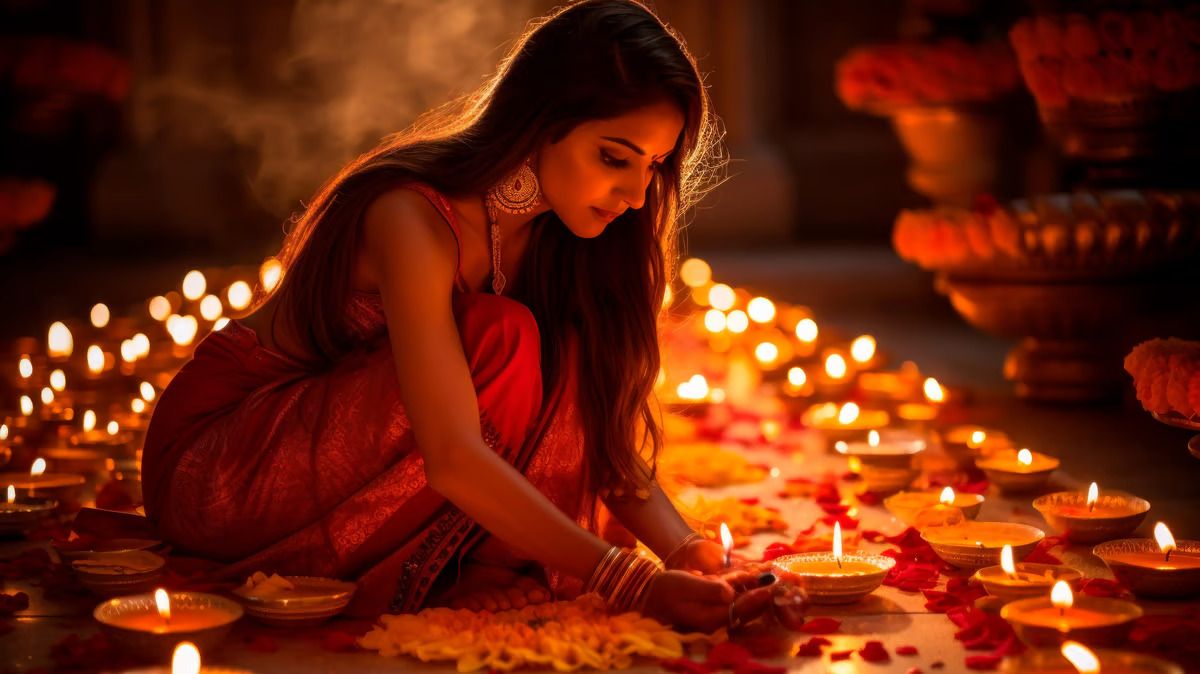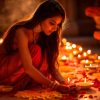Diwali: A Guide for Beginners

Diwali, the Festival of Lights, is one of the most celebrated festivals in India and among Hindus worldwide. It signifies the victory of good over evil and is marked by the lighting of diyas (earthen lamps), fireworks, and the exchange of gifts. If you’re new to Diwali, here’s a guide to help you understand and celebrate this joyous occasion.
Understanding the Significance of Diwali
Diwali is a five-day festival, also known as the 5 Days of Diwali. Each day has its own significance:
- Dhanteras: The first day of Diwali is dedicated to wealth and prosperity. People purchase new items, especially gold or silver, to bring good fortune.
- Chhoti Diwali: The second day is also known as Naraka Chaturdashi. It is believed that Lord Krishna defeated the demon Narakasura on this day, and people celebrate by bursting crackers and lighting lamps.
- Diwali: The third day is the main day of the festival. It marks the return of Lord Rama, Sita, and Lakshmana to Ayodhya after defeating Ravana. People light diyas, decorate their homes with rangoli (colorful patterns), and exchange gifts.
- Govardhan Puja: On the fourth day, people worship Lord Krishna for protecting Mount Govardhan from the wrath of Indra.
- Bhai Dooj: The fifth day is dedicated to the bond between siblings. Sisters apply a tilak (forehead mark) to their brothers and pray for their well-being.
Preparing for Diwali
- Cleaning and Decorating: Before Diwali, people clean their homes and decorate them with lights, flowers, and rangoli.
- Shopping: Diwali is a time for shopping. People buy new clothes, gifts, sweets, and other items.
- Cooking: Many families prepare special dishes for Diwali, such as sweets, snacks, and main course meals.
Celebrating Diwali
- Lighting Diyas: One of the most important traditions of Diwali is lighting diyas. Diyas are small earthen lamps that are filled with oil and a cotton wick. They symbolize the victory of light over darkness.
- Decorating with Rangoli: Rangoli is a traditional Indian art form that involves creating colorful patterns on the floor. Rangoli designs often depict deities, flowers, or geometric shapes.
- Fireworks: Diwali is also known for its spectacular fireworks display. People light crackers and fireworks to celebrate the festival.
- Exchange of Gifts: Diwali is a time for giving and receiving gifts. People exchange gifts with their loved ones as a token of affection and goodwill.
- Family Gatherings: Diwali is a time for families to come together and celebrate. People often visit their relatives and friends to exchange greetings and best wishes.
Diwali Traditions and Customs
- Laxmi Puja: On the main day of Diwali, people worship Goddess Lakshmi, the goddess of wealth and prosperity. They offer prayers and perform rituals to attract her blessings.
- Hanuman Chalisa: Many people recite the Hanuman Chalisa, a devotional hymn to Lord Hanuman, during Diwali. It is believed to bring strength, courage, and protection.
- Annakut: On Govardhan Puja, people prepare a variety of dishes and offer them to Lord Krishna as a symbol of their gratitude.
Diwali Food and Sweets
- Sweets: Diwali is incomplete without sweets. Some popular Diwali sweets include laddoos, barfi, gulab jamuns, and jalebi.
- Savory Snacks: People also enjoy savory snacks like samosas, pakoras, and chaat during Diwali.
- Main Course: Many families prepare special main course dishes for Diwali, such as biryani, pulao, and curry.
Diwali is a festival of joy, light, and prosperity. By understanding its significance and traditions, you can fully appreciate and participate in this beautiful celebration. Happy Diwali!

